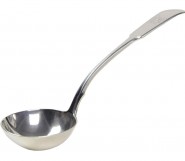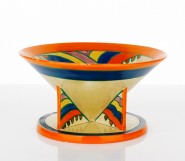Lot #23 - 1972 JAGUAR E-TYPE SERIES 3 V12 'MANUAL' OTS ROADSTER -Highly original car (Current ownership for over 44 years)
-
Auction House:Donington Auctions
-
Sale Name:Collectors' Motorcycles, Cars & Horse Drawn Carriages - Featuring the Private Museum of Racing Driver Bryan Thomson
-
Sale Date:20 Jun 2021 ~ 2pm (AEST)
-
Lot #:23
-
Lot Description:1972 JAGUAR E-TYPE SERIES 3 V12 'MANUAL' OTS ROADSTER -Highly original car (Current ownership for over 44 years)
Owned for over 44 years by Bryan Thomson. Factory right hand drive example. Highly original car, in original paint, trim and hood. Retaining its original matching number engine. One of a mere 1,872 produced. Odometer displaying 53,705 miles. -
Notes:The sensational Jaguar E type has forged an iconic position in automotive design since it appeared in 1961. Enzo Ferrari hailed it 'The most beautiful car ever made' (Classic Car Review 1964, article by Sean Curtis) and in 1996 the New York City Museum of Modern Art recognised the significance of the E type's design by adding a blue roadster to its permanent design collection, one of only six motor cars to receive the distinction. The E type's performance had been more than satisfactory at around 500lb (227kg) - lighter than the XK150 and with D-type experience gained by aerodynamicist Malcolm Sayer, Jaguar's racing and road car development brought forth one of the most stylish and dexterous shapes ever in original design. The lighter E type Jaguar had changed the sports car world forever. Technically, there are 3 variants of the E type; the Series 1, 2 and 3 and they were produced in 3 body styles; the roadster; the fixed-head coupe and the 2+2 fixed-head coupe. From a production viewpoint, the Series 3 varies the most powered by a massive V12 engine dropped in from the top rather than the entire car being assembled around the twin-cam straight 6-cylinder engines in the Series 1 and 2. All the production E types were made of a steel monocoque body with separate steel sub frames front and rear and the all-enclosing steel bonnet hung on the front. The gearbox and engine help brace the front sub-frame which itself supports both and also support the front wheels via torsion bar suspension. The back axle is held together by its own sub-frame fixed to the monocoque by rubber mountings allowing for 5 degrees of movement in the rear. The car that dominated sports car classes during the 1960s and remained virtually unchanged in appearance finally reached its crossroad in 1969 with the Series 2 because dictatorial American modifications were having a huge impact to overall performance and the all-important top speed. Italian cars like the De Tomaso Pantera and the American V8s presented the E type a massive challenge to keep up. Emission control changes impeded performance and Jaguar realised that to compensate for the lack of horsepower the Series 2 now generated they had to make a significant change to compete with their rivals. The emission regulations simply strangulated performance to a comparatively tedious 135mph and even as slow as 120 on some of the more heavily choked cars. And so, it came about the V12, which had been under development for almost 10 years, was dropped into the existing Series 2 chassis and the Series 3 was born. To accommodate the V12 engine it was decided not to use the twin overhead camshaft heads. Minimal structural changes were needed other than the front tubular framework being redesigned and strengthened; the bulkhead was enlarged and strengthened, and a tie bar was applied under the motor to compensate for the extra torque; the ventilated front disks were given an air scoop to cool the rear disks-a feature of earlier racing E types. The entire floor area was lowered, power steering became standard, a smaller steering wheel and the wheelbase lengthened by 9 inches. There was an option to fit an automatic transmission and for manual transmission cars, the clutch went from 9 to 10 inches. Four Zenith constant vacuum carburettors were fitted to comply with US emission laws. The Motor's test car, a drop-head with hard-top in place, reached 146mph, albeit slower than the original E type yet it achieved 100mph in 15.4 seconds compared with 17.2 of the 4.2 coupe in a comparison test. They had to acknowledge it the quickest E type they had tested. The car had other appealing performance aspects being more flexible than the 4.2 and could almost take off from a stand-still in top gear of the clutch was manipulated accordingly. The V12 was of a refined tourer, exceedingly fast and somehow a leap in performance from its sporting siblings. The Series 3 was produced until 1974 when the US emission and safety control regulations finally strangled its very essence being speed and performance and sales suffered terminally. But, within 2 years of the end of production the Series 3 had increased in value on the second-hand market with discerning buyers realising the car non-the-less represented an era of sports car never to be seen again. Bryan Thomson said when Melbourne Dr. Berminghams said to his son Ross that he would buy him a new car if he graduated with honours in his final years abroad studying medicine at Cambridge, he might not have realised what this could cost! The newly graduated with honours Ross Bermingham choose his dream car, the newly released Series III V12 E-Type Jaguar Roadster. In around 1977 on a visit to Rod Murphy Motors (son of famed APG MG driver Les Murphy) in Brighton, Bryan Thomson spied in a showroom window, next door to Rods workshop, a stunning E-Type roadster. He subsequently purchased it and used it for a daily driver for about 14 months before buying a new XJS Jaguar and parking the E-Type in the shed, using it sparingly thereafter. This Series 3 E type open two-seater is accompanied with The Jaguar Trust Heritage Certificate that states this car was manufactured as a manual, right hand drive, 4th May 1972 and dispatched on the 16th June 1972, to Henlys London. The date of import into Australia is unknown, however, the newly graduate junior Dr Bermingham is believed to have brought the car back to Melbourne with him after returning to Australia. This car is presents in its original silver livery with black interior trim. The car has been used sparingly over the years but has been serviced regularly like the rest of Bryans stable. This car is sold with its original half tonneau cover. A factory RHD Series III in this wonderfully untouched original condition is seldom seen. This vehicle is sold unregistered.
-
Estimate:A$150,000 - 170,000
-
Realised Price:
-
Category:Automobiles & Accessories
This Sale has been held and this item is no longer available. Details are provided for information purposes only.










